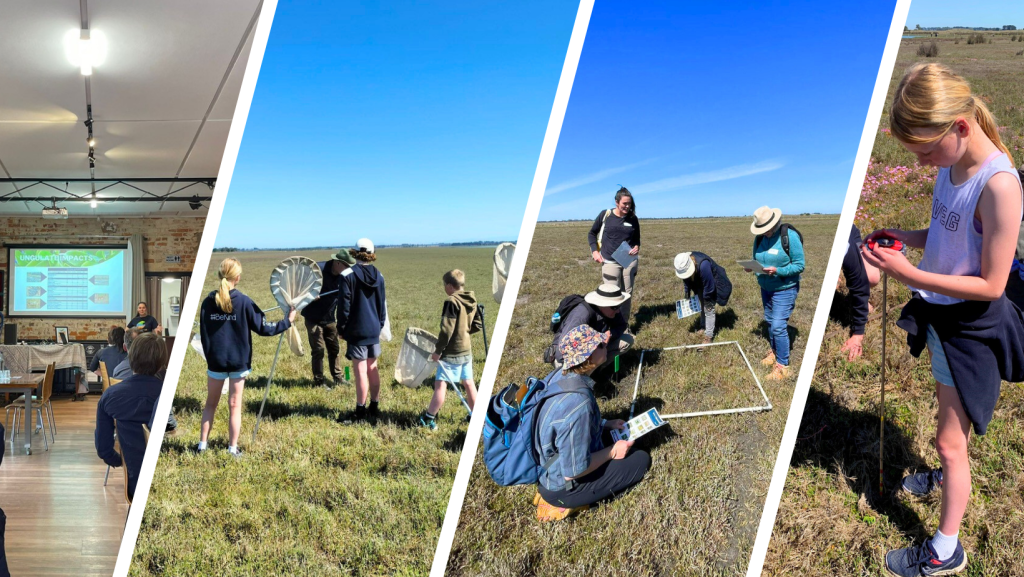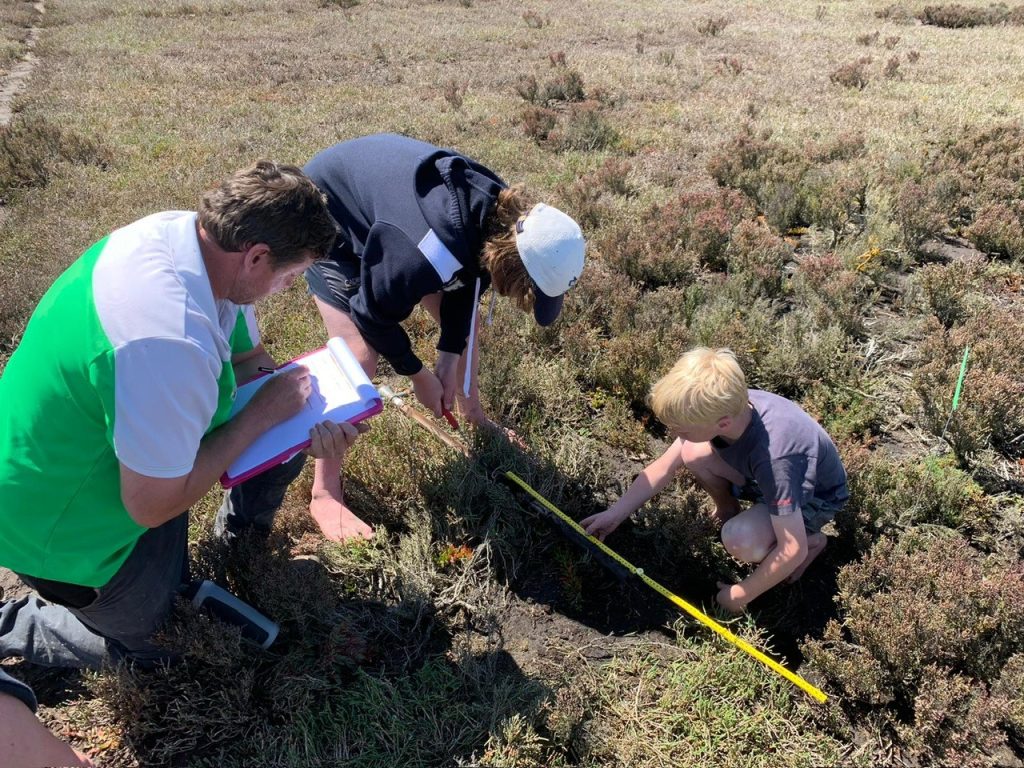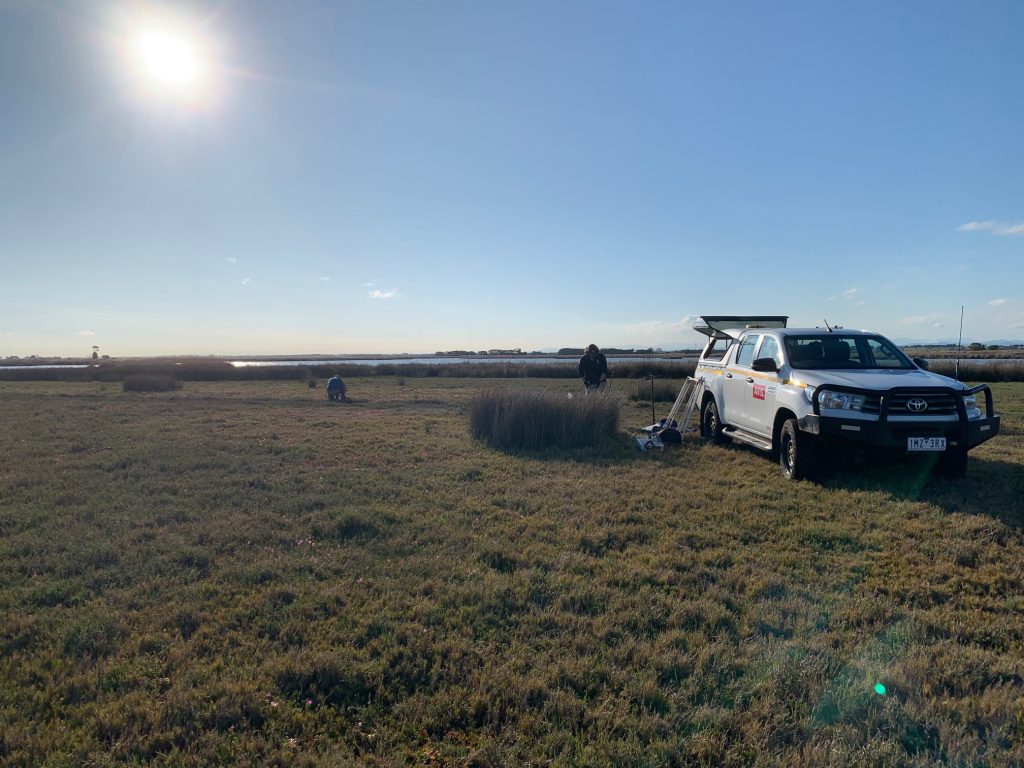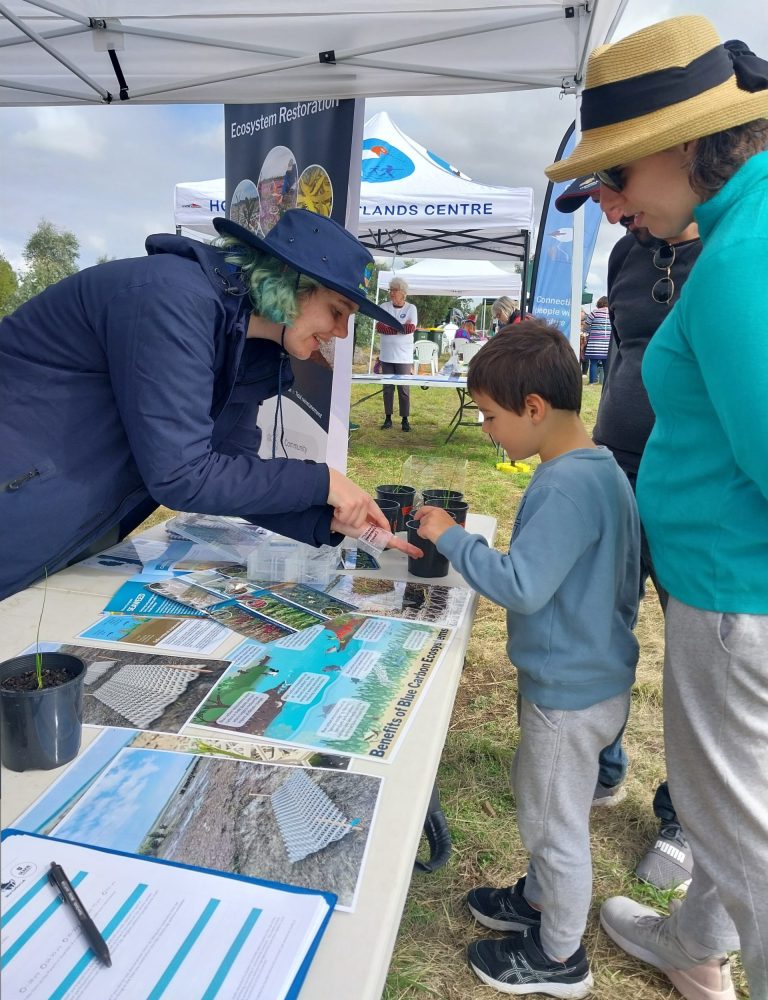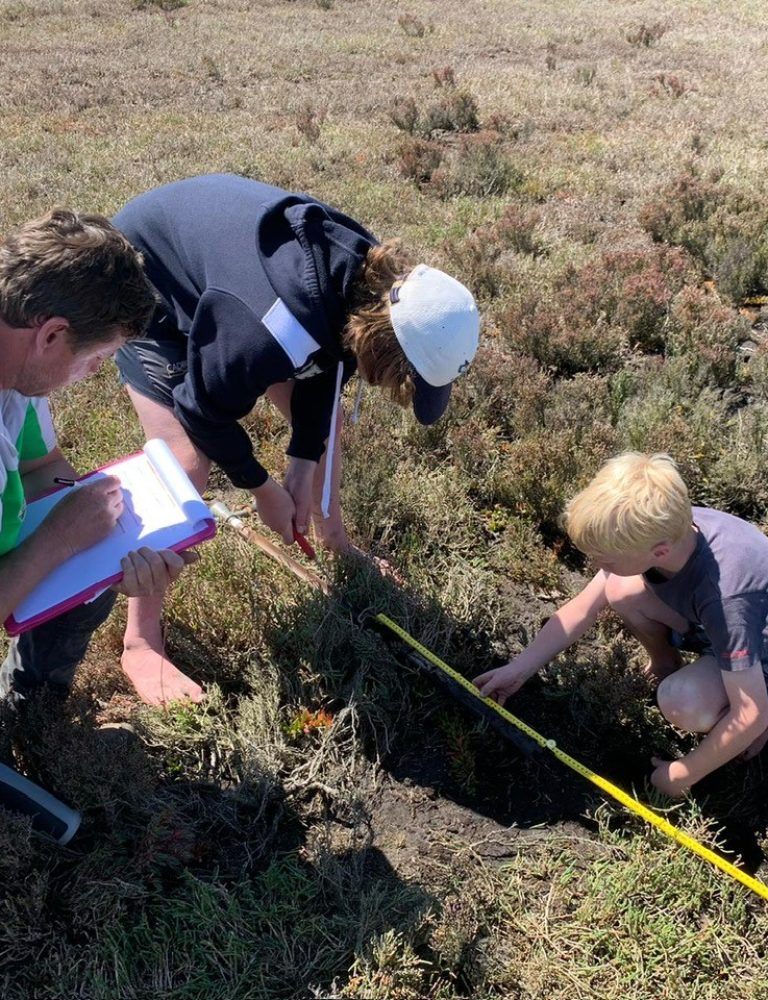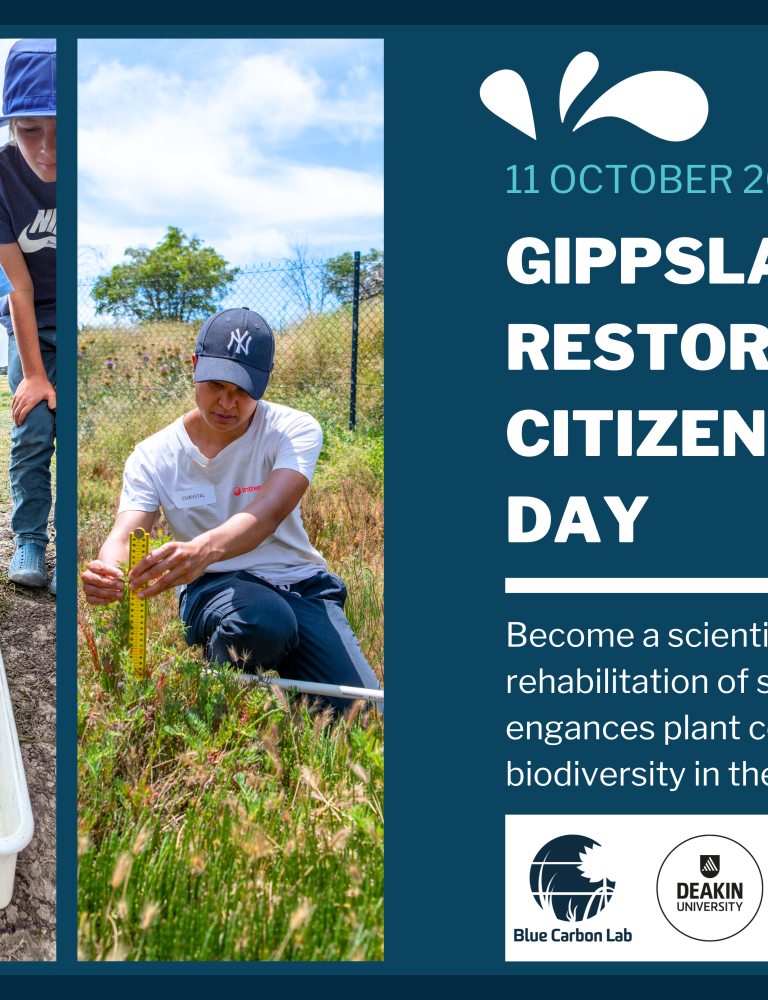What a day for it! The clear sky beams shades of blue on Victoria lagoon. There is excitement in the air as volunteers bustle around 4-wheel drives overfilled with gadgets. All are entranced by a white-bellied sea eagle gliding slowly over an oasis that persists after flooding rains. We are here to have a conversation: about why coastal wetlands (blue carbon ecosystems) are important, the questions buried in their soils, and the role we all will play in ensuring their existence.
Last Wednesday, our team welcomed 25 citizen scientists from State and local governments, Catchment Management Authorities, Non-Governmental Organisations, Landcare groups, and local communities to our saltmarsh restoration site in the Gippsland Lakes. The Gippsland Lakes is an interesting region ecologically because the establishment of a permanent entrance (Lakes Entrance) for navigability in 1889 led to the conversion of previously freshwater lakes into brackish/saline environments. Distinct biome shifts saw freshwater swamps replaced with coastal wetlands, including saltmarshes. There is therefore lots of suitable area for saltmarsh restoration projects that could enhance carbon capture and storage for climate change mitigation and deliver co-benefits for biodiversity and society.
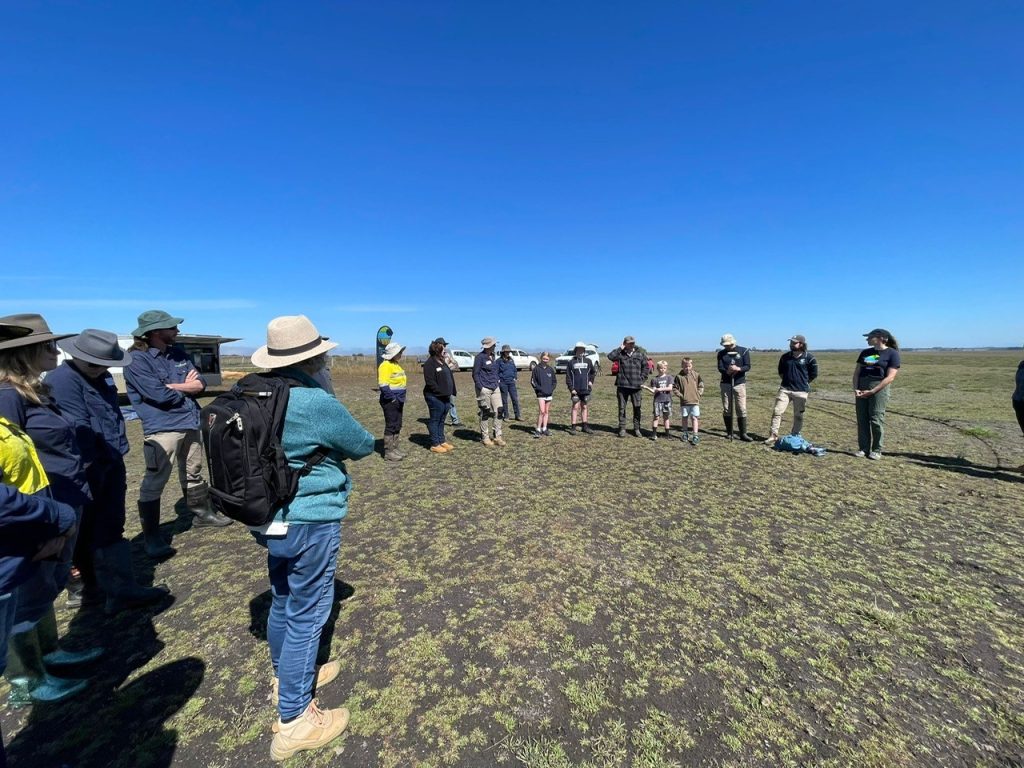
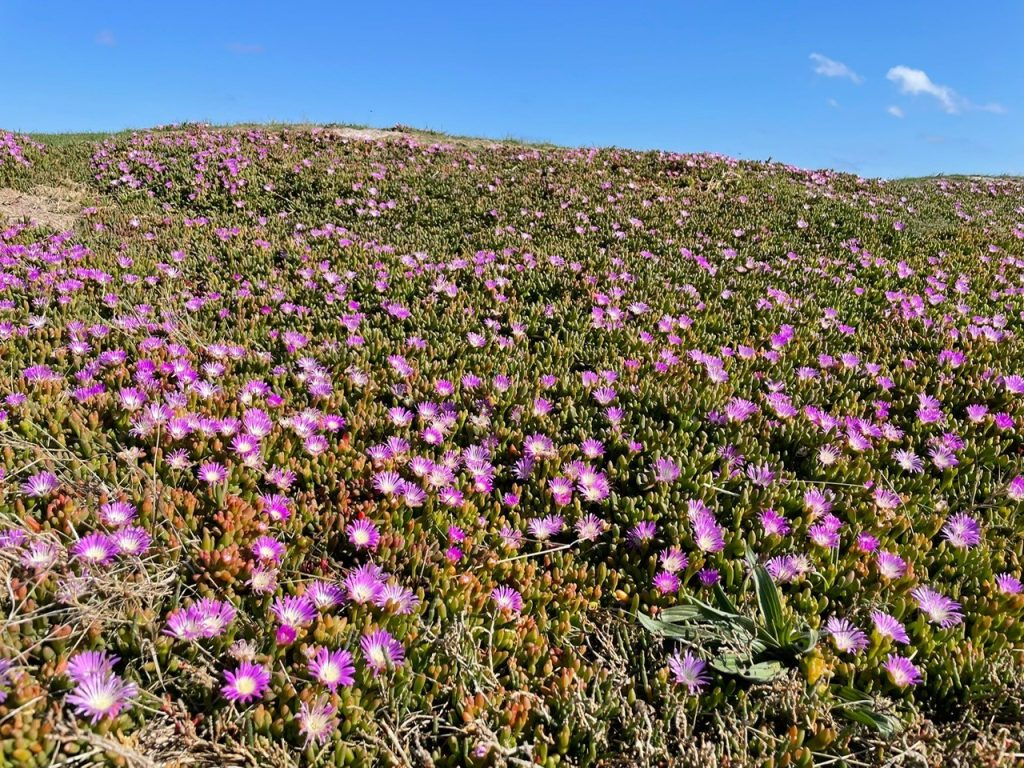
At our field site, we are restoring over 200 hectares of coastal temperate saltmarsh (a federally threatened ecological community) through a combination of fencing for livestock exclusion, revegetation, and reinstatement of tidal flows to rewet areas that were historically coastal wetlands. This is made possible through the cooperation of private landholders and Traditional Owners, who want to see improvements to the quality of their land and protect the environment for future generations.
After a presentation on blue carbon restoration, the citizen scientists helped us to conduct pre-restoration surveys that will be important for monitoring changes in the site over time and measuring restoration success. Martin Potts from Greening Australia showed volunteers zonation patterns in the saltmarsh and discussed impacts of agriculture and natural processes on the site. Rory and Phebe from the Blue Carbon Lab guided volunteers to collect soil cores, recording soil strength and composition at different depths. Some microbiome samples were also collected to be analysed in the lab. Jon Caldow from BugBlitz captivated the children in attendance with his mobile laboratory, where invertebrate samples from sweep nets were processed. With help from Jon’s son Louis and the Blue Carbon Lab’s Dr Noyan Yilmaz, an unbelievable diversity of beetles, worms, and flying insects were uncovered! Robert Wright from Birdlife Australia was most interested in the birds present, identifying 35 different species chirping and gaggling across the saltmarsh! Last but not least, Dr Melissa Wartman led a team of volunteers to complete vegetation surveys, which used quadrats to sample the dominant plant species on different parts of the site. Melissa’s team also measured livestock impacts, using a new methodology developed by the University of Queensland to assess gradation of impacts along transect lines.
After more than 2 hours in the field, it was back to the bus and onto our lunch spot, which overlooked supratidal swamps and saltmarsh on the banks of Lake Victoria. It was great having time to chat with all of our amazing volunteers, and to see their eyes light up when recounting their favourite moments. That passion is what drove me and my colleagues to our line of work, and it is a saving force that will protect coastal wetlands from now into the future.
Citizen science is an important part of what we do. It is an immersive engagement opportunity that allows us to communicate science in a way that is not only understood, but also penetrates barriers to resonate with communities, landholders, land managers, and regulators. Through their participatory role in restoration, citizen scientists leave us with a sense of stewardship and most importantly, hope. We value the input of all our volunteers and their response to our call to action. There is so much we can achieve together, and we have only just grazed the surface.
This event was made possible by funding from BHP, Helen Macpherson Smith Trust, and The Intrepid Foundation.
JOIN US ON OUR NEXT ADVENTURE!
To find out about upcoming citizen science opportunities, sign up to our newsletter.

